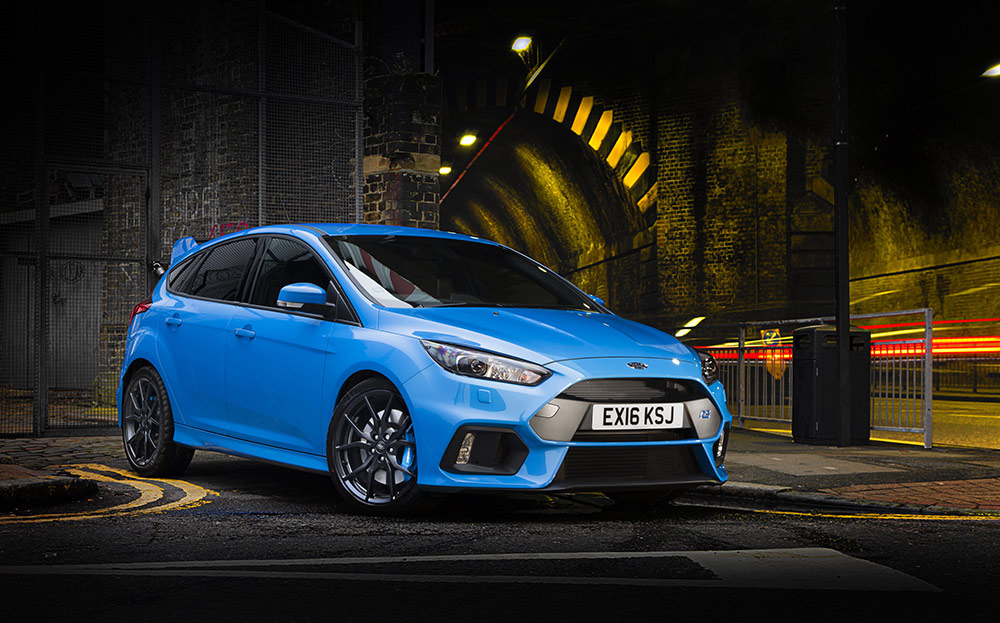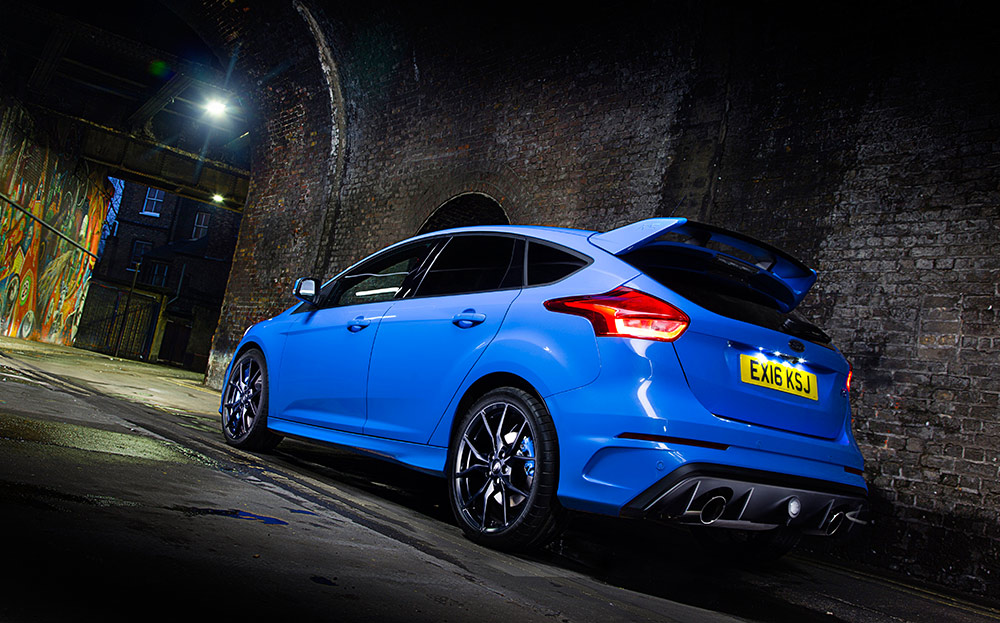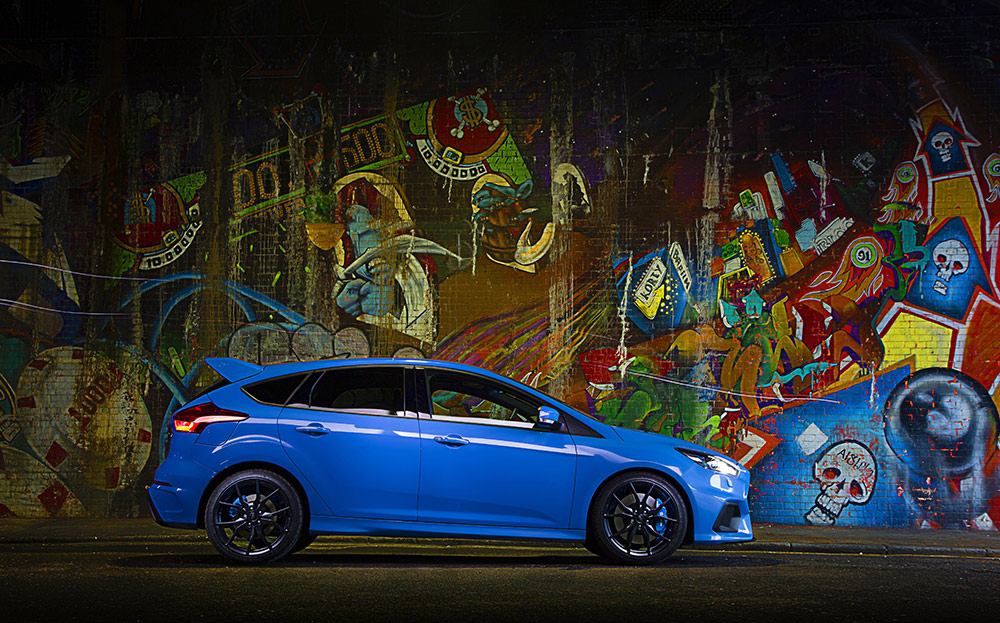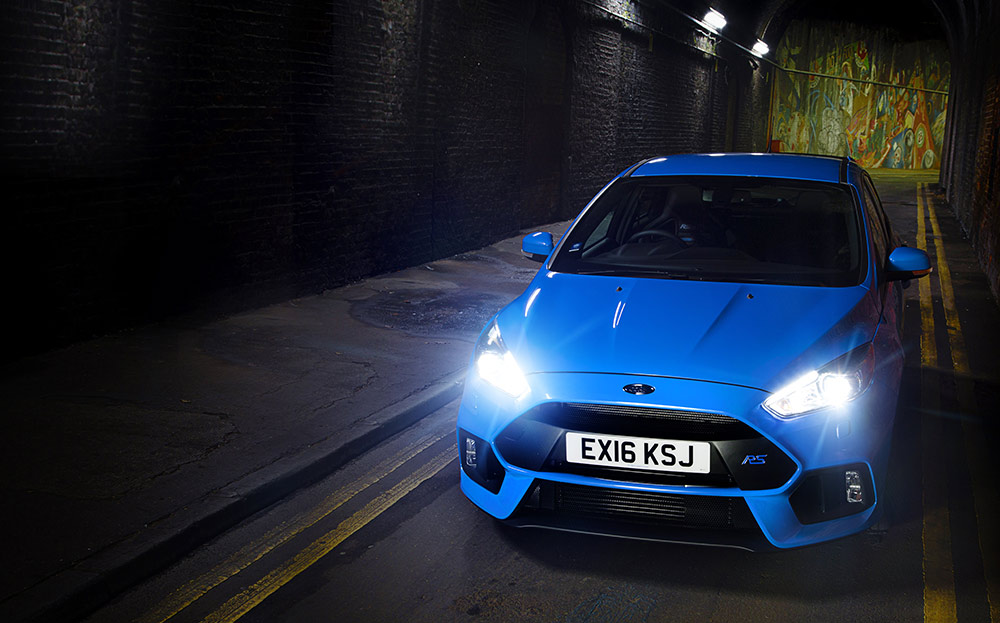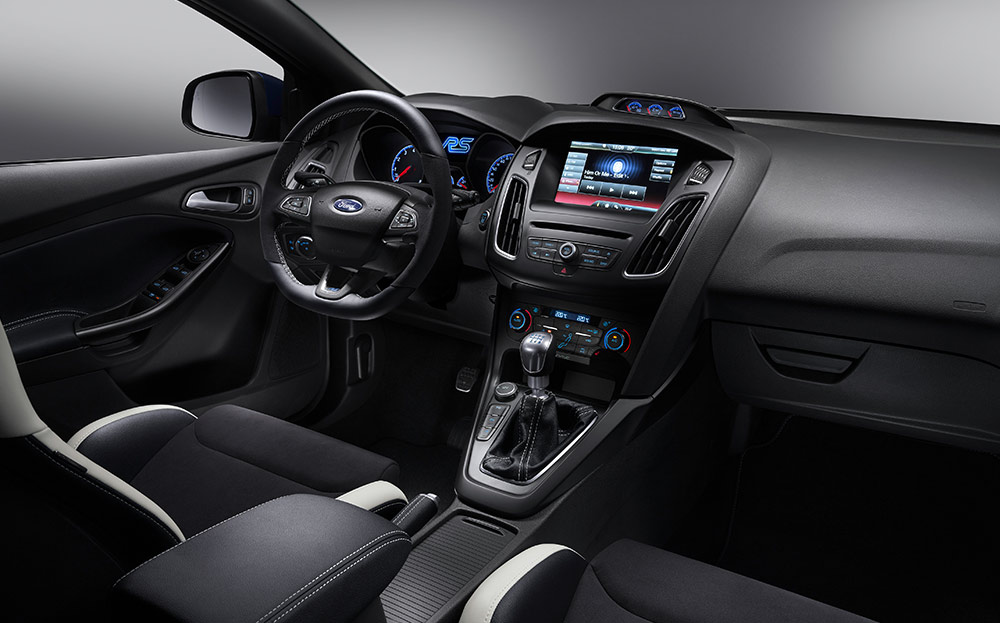The Clarkson Review: 2016 Ford Focus RS
Gary, son of God, v the bean-counters
JOURNALISTS who were invited by Ford to sample the new Focus RS at its official launch in Spain have been saying that it’s certainly the greatest car yet made and that possibly it’s even more than that. Quietly, using nuance and subtle phrase-making, they’ve been hinting that perhaps it’s the new baby Jesus.
They speak of a £31,000 car that can go round corners at a million miles an hour and a five-door family hatchback that comes with a Drift mode. They say it is capable of immense speed and great comfort, and after a thousand words the reader is starting to get the picture: nobody has yet let on what form the second coming might take, so who’s to say God’s new emissary won’t arrive on earth with windscreen wipers?
Hype, however, is a dangerous thing. I was told by critics that 12 Years a Slave was an absolutely tremendous film, and it wasn’t. They did the same with Dallas Buyers Club, and halfway through I found myself thinking: “This is just a very long advertisement for whatever slimming pills Matthew McConaughey has been taking.”
View the hot hatches for sale on driving.co.uk
I didn’t even agree with their assessment of the new Batman v Superman film. They said it was terrible, and it just isn’t. It’s way worse than that.
Hype, then, is a nuisance for film makers. Because instead of leaving the cinema thinking, “That was very enjoyable,” audiences tend to leave thinking, “That wasn’t as good as the critics said.” And on that note we arrive back at the Ford Focus RS.
I may have touched on this before, but it bears repeating here for those who can’t remember — namely, people such as me who are in their fifties. Ford has been running an advertising campaign recently urging people to “unlearn” what they know about the brand. The company is of course talking to the Mondeo Man generation.
“Even at James May speeds, on a roundabout in Hounslow, this car feels cleverer than is normal”
But there’s a dangerous downside to this. Because when it asks people of my age to “unlearn” all they know about Ford, that means forgetting about the Escort Mexico and the Lotus Cortina and the Essex-engined 3-litre Capri and the RS200 and the GT40 and the Sierra RS Cosworth and the Cortina 1600E and the XR3i. It means forgetting that Ford has made more truly great cars in its history than any other company. Including Ferrari.
In the early 1990s I had an Escort RS Cosworth, and that car would go into anyone’s list of all-time greats. It wasn’t so much the wallop from its turbocharged engine or the grip from its four-wheel-drive system or even the preposterousness of its enormous rear spoiler that made this car so endearing; no, it was more the fact it was a working-class hero, a blue-collar bruiser that could mix it with the bluebloods. A Ford that could keep up with, and then overtake, supercars that cost five or six times more.
After the Cossie was dropped, though, Ford rather lost its way. With the exception of the GT and the wonderful Fiesta ST, it stopped making great cars and began to believe good was good enough.
But it isn’t. Every car firm needs to make the occasional loss-leading halo. Manufacturers need to accept that not one of the designers or engineers they employ joined up so they could work on the new rear-light cluster for a hatchback. They joined up so they could get their teeth into something that would cause the world to stagger.
Oh, Ford had a couple of attempts with the Focus over the years. It put a powerful engine under the bonnet and told us four-wheel drive was unnecessary because it had developed a differential or a new type of knuckle joint in the suspension that would keep the torque steer at bay. But the cars failed to ignite any passion in the enthusiast, because we knew the real reason they didn’t have four-wheel drive. It would mean redesigning the whole underside of the vehicle, and that would mean new tooling at the factory. And that would be too expensive.
Well, with the new Focus RS, Ford has bitten the bullet. It has locked the accountants in a cupboard and bought the tooling. It has fitted four-wheel drive, and you know after about 100 yards that it has created something very special. Even at James May speeds, on a roundabout in Hounslow, this car feels cleverer than is normal. It feels like a Nissan GT-R.
That’s because it’s not just an off-the-shelf four-wheel-drive system. It’s one of the most advanced active asymmetrical systems fitted to any car at any price. Somewhere in a cupboard an accountant is screaming.
The engine is less amazing. It’s a so-called 2.3-litre EcoBoost unit, lifted from Ford’s hire-spec Mustang in America and beefed up in Europe so you get 345 brake horsepower. That isn’t as much as you get from the hot Mercedes-AMG A 45, but, remember, that thing is a lot more expensive.
“While the Golf R doesn’t have quite such fearsome cornering ability, it won’t cause your friends to call you Gary”
And, anyway, 345bhp is enough to provide a meaty shove in the back when you accelerate and a growly 40-a-day rumble from under the bonnet. Put it in Sport mode and you get some spitting from the exhaust as well. If this car could talk, you suspect, it would sound like John Terry.
Interestingly, given the sophistication of the four-wheel-drive system, you get a straightforward six-speed manual. Old skool. And a proper handbrake lever that you can use to do bird-pulling skid turns in a car park.
Put all of this lot together and what you get is, as the critics have been saying, something really quite inspirational. A genuine half-price GT-R. However, whereas the critics on the launch went off to play with the Drift mode, which allows even those with fingers of butter and fists of ham to power-slide round corners, I started to think about what else you get with this car.
Even in Normal mode there’s a choppy vertical bouncing motion that is a bit annoying. You also get seats that are mounted on the car rather than in it — they’re far too high. Then there’s a range of only 250 miles and wipers that judder. Oh, and there’s a slot for your iPhone in the dash, which is great. But if you accelerate hard, it shoots out and goes onto the floor.
Furthermore, only one colour is available as standard. It’s a matt grey that Ford calls Stealth. Yeah, right. There is nothing stealthy about this car. It’s so loud and so festooned with spoilers that many potential customers will say, “No, thanks,” and buy the much more subtle Volkswagen Golf R instead.
Browse NEW or USED cars for sale on driving.co.uk
That might be a wise decision, because while the Golf doesn’t have a Drift feature or quite such fearsome cornering ability, it won’t throw your phone on the floor every time you accelerate and it won’t cause your friends to call you Gary.
I like to think, then, that what I’ve provided here is a balanced review of the baby Jesus. I’ve explained that it has a few flaws and that you may be better off with something else.
Because, that way, your test drive in an RS won’t be burdened with hype, and you’ll emerge from the driver’s seat after 10 minutes thinking: “I have got to get me one of these.”



